Is your business struggling with inefficient workflows and bottlenecks? You’re not alone.
Studies show that companies lose up to 20-30% in revenue annually due to process inefficiencies.
But there’s a way out. Implementing the right business process improvement tools can revolutionize your operations, boost productivity, and cut costs.
Tools like ClickUp, Kissflow, and Appian are designed to streamline processes, automate repetitive tasks, and provide data-driven insights.
Ready to take control? Dive into the best tools that will transform your workflows and give your business the competitive edge.
ClickUp for Business Process Improvement
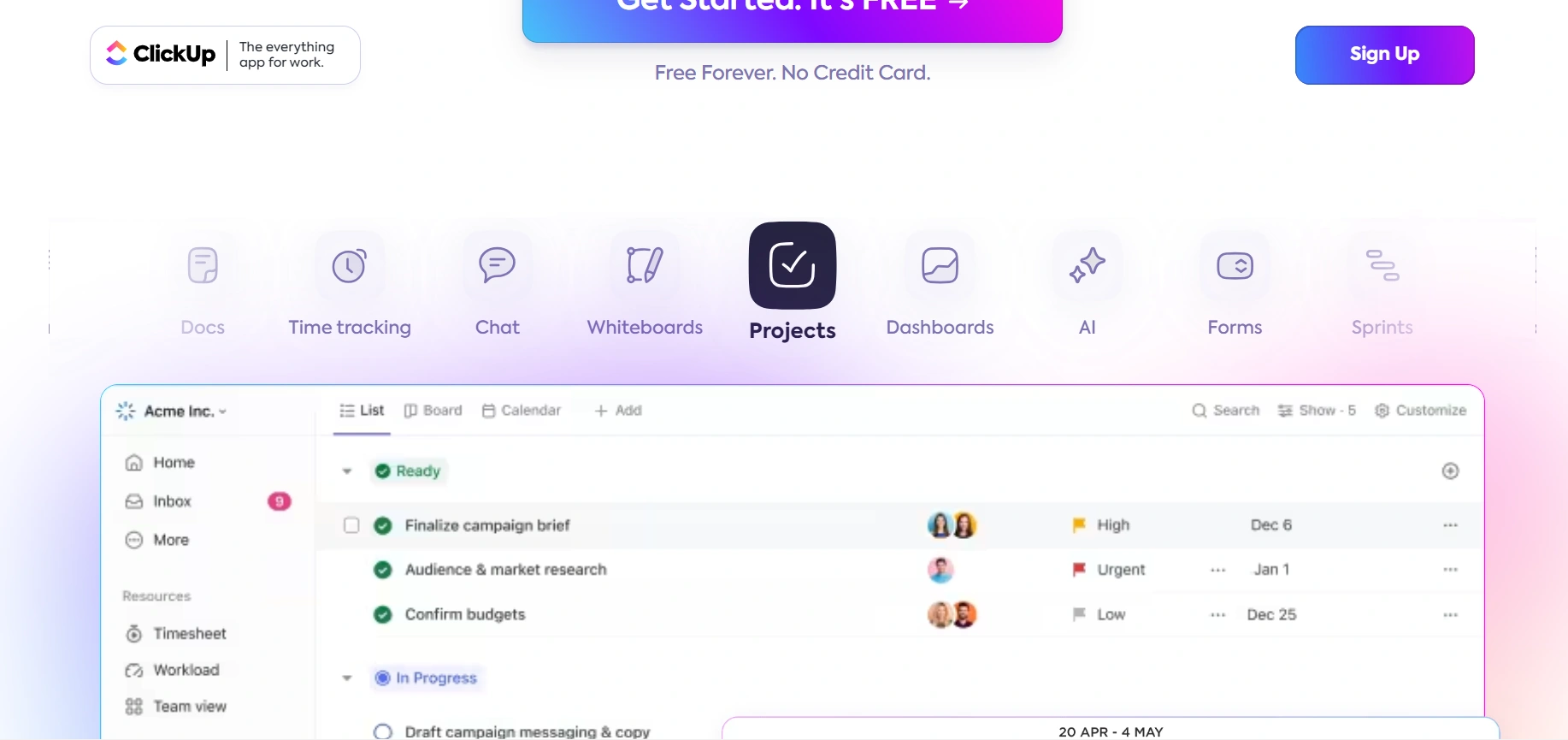
ClickUp is a powerful, feature-rich project management and business process improvement tool that offers extensive customization options and is suitable for teams of all sizes. Here’s an expert breakdown of why ClickUp is a top contender in this space:
Reasons to Buy
- Highly Customizable: ClickUp allows users to tailor workflows, task views (Kanban, list, Gantt chart), and automations to their specific needs, making it versatile for diverse industries.
- Extensive Free Plan: Unlike many competitors, ClickUp offers a generous free tier with unlimited users and projects, making it a great choice for smaller teams.
- Collaboration & Communication: Its real-time collaboration tools (such as comments, mentions, and task assignments) streamline communication and reduce the need for endless email chains.
- Integrations & Automation: ClickUp integrates with over 1,000 apps including Google Drive, Slack, and Microsoft Teams. Automations are easy to set up, helping teams reduce repetitive tasks.
- Advanced Reporting & Dashboards: Customizable dashboards provide deep insights into workflows, progress, and team performance through various widgets like pie charts and graphs.
What Sets ClickUp Apart
- Versatile Views for Workflow Management: ClickUp offers multiple project views such as list, board, calendar, Gantt charts, and timeline, allowing users to visualize their workflows in ways that suit their style.
- Robust Goal Tracking & Time Management: The platform includes tools to set, track, and manage goals, as well as built-in time tracking and reporting features, which can significantly improve productivity.
- ClickApps for Enhanced Customization: ClickApps are additional features that teams can toggle on and off, enabling deeper customization without overwhelming users with unnecessary tools.
What It Lacks
- Steep Learning Curve: Due to its sheer volume of features, ClickUp can be overwhelming for new users. While onboarding guides and support materials are helpful, mastering the platform can take time.
- Mobile App Limitations: The mobile app, while useful, lacks some functionalities such as drag-and-drop for task cards in Kanban view, which limits its effectiveness for on-the-go project management.
- Limited Advanced Features on Free Plan: Although the free version is robust, it lacks some advanced features like automations beyond 100 tasks per month and custom permissions, which are only available in paid tiers.
Kissflow for Business Process Improvement

Kissflow is a versatile, low-code workflow and business process management (BPM) tool that stands out in automating workflows and streamlining processes without requiring extensive technical expertise. Here’s an expert breakdown of why Kissflow is an excellent option for business process improvement:
Reasons to Buy
- No-Code Automation: Kissflow’s no-code platform allows users to design and automate workflows through an intuitive drag-and-drop interface, making it accessible to non-technical users.
- Comprehensive Reporting and Analytics: The platform offers robust reporting features, including pre-built and custom reports, dashboards, and real-time data tracking, which are essential for monitoring and optimizing business processes.
- Seamless Integrations: Kissflow integrates well with numerous tools, including Google Workspace, Microsoft 365, Salesforce, and Zapier, streamlining data flow across multiple systems.
- Pre-Built Templates: With over 50 ready-to-use application templates, businesses can quickly get started with common workflows like employee onboarding, purchase requests, and expense management.
- Cloud-Based Accessibility: Kissflow’s cloud-based platform allows users to access their workflows from any device, making it ideal for teams working remotely or on the go.
What Sets This Tool Apart
- Ease of Use for Non-Technical Teams: Kissflow’s no-code environment allows users from various departments (not just IT) to create workflows and manage processes, democratizing business process management.
- Versatility Across Industries: From education to sales and media, Kissflow has been praised for its ability to adapt to a wide variety of industries and workflows, offering flexibility in process management.
- Excellent Collaboration Features: Kissflow supports real-time collaboration, enabling team members to discuss and track tasks with ease, improving communication and reducing the reliance on email chains.
What It Lacks
- Steep Learning Curve for Complex Workflows: Despite its no-code platform, users report that mastering more advanced features and optimal workflow designs can take time, especially during the initial setup.
- Limited User Interface Flexibility: While Kissflow’s interface is user-friendly, some users have noted a lack of customization options for organizing apps or modifying the visual layout.
- Inconsistent Customer Support Response Times: Some users have expressed frustration with slower-than-expected response times for critical support requests, which could be an issue during time-sensitive situations.
Appian for Business Process Improvement

Appian is a leading low-code platform that offers powerful automation capabilities to streamline complex business processes. It excels in integrating business processes, data management, and automation into a single platform, making it a valuable tool for enterprises seeking operational efficiency and faster application development.
Reasons to Buy
- Low-Code Development: Appian’s drag-and-drop interface allows non-technical users to design complex workflows and applications, reducing development time and empowering business users to automate tasks without extensive coding knowledge.
- Unified Data and Process Automation: Appian integrates process automation (RPA, AI-driven workflows) with unified data management, enabling organizations to create seamless workflows across systems and applications.
- Scalability for Large Enterprises: Appian’s platform is built to scale, making it suitable for large organizations that need to handle a high volume of users and complex processes, such as the U.S. Department of Treasury and Enterprise Rent-A-Car.
- End-to-End Process Visibility: Appian’s process mining and analytics tools help organizations monitor and optimize business processes in real-time, identifying inefficiencies and allowing for rapid adjustments.
- Enterprise-Grade Integrations: Appian integrates with major enterprise software, including Salesforce, Microsoft SharePoint, AWS, SAP, and many others, facilitating smooth integration with existing systems.
What Sets This Tool Apart
- Full-Stack Automation: Appian provides a full-stack solution for automation, combining business process management, case management, RPA, AI, and data management on one platform. This integrated approach supports both structured and unstructured processes.
- Rapid Prototyping and Iterative Development: Appian’s low-code capabilities allow for rapid prototyping and iterative improvements, enabling teams to continuously refine applications based on real-time feedback and changing business conditions.
- Process Mining and Insights: Appian’s built-in process mining tools provide detailed insights into business operations, helping organizations optimize workflows and uncover bottlenecks with data-driven decision-making.
What It Lacks
- Complexity in Advanced Customization: While Appian’s low-code platform is user-friendly for basic tasks, more advanced customizations, especially when integrating with complex systems, can become resource-intensive and require specialized knowledge.
- Limited UI/UX Customization: Some users have noted that Appian’s UI/UX customization options are limited, making it less flexible for those seeking highly tailored user interfaces.
- Pricing Transparency: Appian’s pricing is not readily available on its website, and it often requires consultation for enterprise solutions. This lack of upfront pricing may be a drawback for smaller organizations.
Bizagi for Business Process Improvement
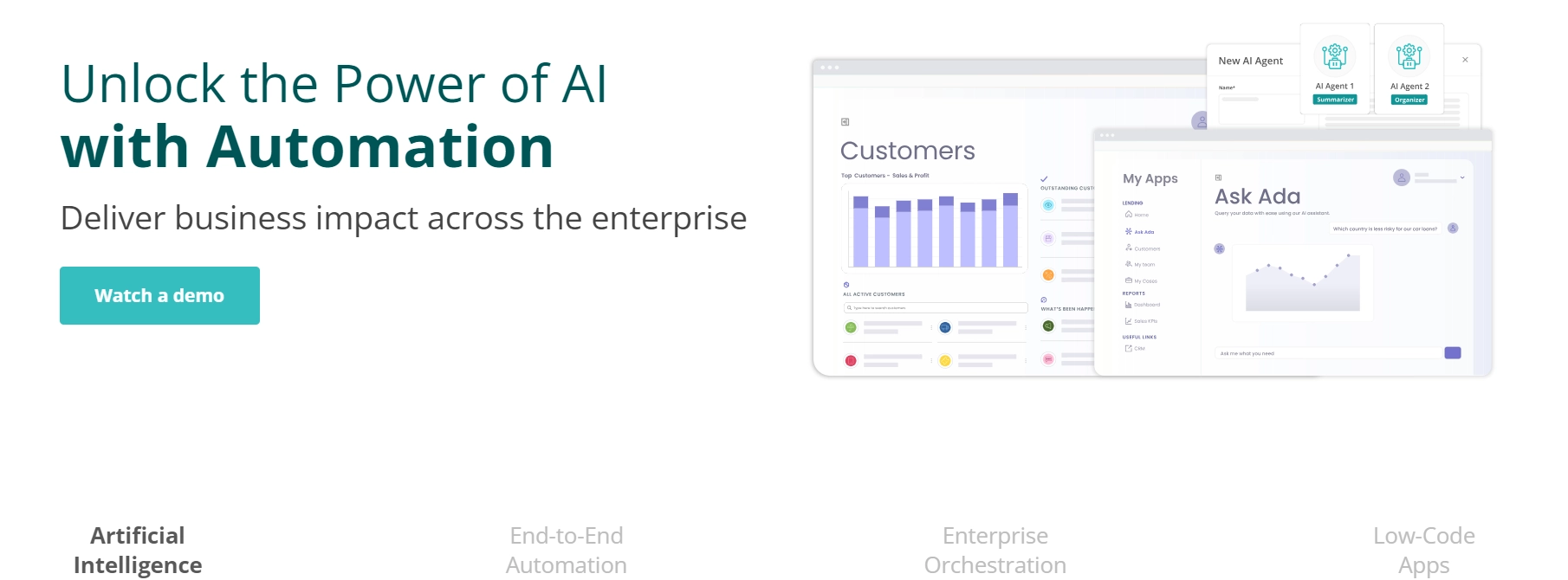
Bizagi is a low-code business process management (BPM) and automation platform designed to help organizations streamline operations and enhance efficiency. With strong modeling, automation, and integration features, Bizagi supports businesses in designing, simulating, and automating their workflows.
Reasons to Buy
- Low-Code Automation: Bizagi’s intuitive drag-and-drop interface allows users to automate processes without extensive coding, making it accessible to both business and IT teams.
- Process Simulation and Optimization: Bizagi enables users to run “what-if” scenarios to identify bottlenecks and optimize workflows by testing different solutions based on time, cost, and resource utilization.
- Seamless Integration: Bizagi integrates with legacy systems and major business applications such as SAP, Salesforce, and Microsoft 365, allowing businesses to unify their operations and enhance data flow across platforms.
- Robust Process Modeling Tools: Bizagi supports BPMN-compliant process modeling, allowing users to map their business workflows, simulate improvements, and collaborate with stakeholders to refine processes.
- Cloud-Native Platform: Bizagi’s cloud-native architecture supports scalability and enterprise-grade performance, making it ideal for businesses with growing automation needs.
What Sets This Tool Apart
- End-to-End Process Automation: Bizagi’s platform allows organizations to orchestrate processes, people, bots, and data through a single platform, ensuring end-to-end automation across the enterprise.
- Advanced Analytics and AI Integration: With built-in AI capabilities and analytics, Bizagi offers real-time process monitoring and KPI tracking, providing businesses with actionable insights to drive continuous improvement.
- Industry-Specific Solutions: Bizagi offers pre-configured templates and industry-specific solutions, enabling faster deployment and reducing the time required to optimize processes.
What It Lacks
- Complex Legacy Integration: While Bizagi supports integration with many systems, users have reported challenges when integrating with older, more complex legacy systems, requiring additional resources to ensure smooth data flow.
- Pricing Model for Smaller Enterprises: Bizagi’s pricing may be a barrier for smaller organizations or those with limited budgets, as its enterprise-level features are designed with larger companies in mind.
- Learning Curve for Advanced Features: While the platform is easy to use for basic processes, more advanced customization and automation may require additional training and expertise, especially for complex workflows.
Monday.com for Business Process Improvement

Monday.com has gained significant traction as a versatile work management platform. It offers an intuitive interface, customizable workflows, and robust automation features that make it a top contender for businesses seeking to improve their processes.
Reasons to Buy
- Highly Customizable: Monday.com provides over 200 templates and the ability to create custom workflows, which can cater to various industries like marketing, sales, HR, and project management.
- Versatile Views: It offers multiple project views, such as Gantt charts, Kanban boards, timelines, and calendars, allowing teams to choose the most effective way to manage tasks.
- Automation and Integrations: With built-in automation and integrations with over 40 tools, Monday.com helps automate repetitive tasks and integrates seamlessly with platforms like Slack, Google Drive, and Microsoft Teams.
- User-Friendly Interface: The platform’s drag-and-drop interface makes it easy for users, even those without technical skills, to manage and organize tasks.
- Comprehensive Support: Monday.com offers 24/7 support across all plans, with added benefits like dedicated customer success managers for enterprise users.
What Sets This Tool Apart
- Work OS Flexibility: More than just project management, Monday.com acts as a “Work OS,” allowing businesses to manage multiple facets, from sales CRM to HR processes, all within one platform.
- Collaboration Features: It streamlines communication with built-in tools, reducing the need for third-party messaging platforms. Conversations and updates happen directly on tasks, improving transparency and team alignment.
- Extensive Automation and Reporting: Automations can be customized for workflows, and Monday.com offers advanced reporting features in higher-tier plans to track project performance and identify bottlenecks.
What It Lacks
- Steep Learning Curve for Complex Features: While the basic functionalities are easy to pick up, more advanced features like automation and detailed reporting can be overwhelming for new users. There is a learning curve for mastering the platform’s full potential.
- Pricing Structure: As your team grows, Monday.com can become expensive, especially when upgrading to plans that unlock time tracking, advanced reporting, and other premium features.
- Limited in Lower Tiers: Features like Gantt charts, time tracking, and advanced automations are only available in the Standard and Pro plans, meaning smaller teams on the Basic plan may feel limited.
Cflow for Business Process Improvement

Cflow is a cloud-based workflow automation and business process management (BPM) tool designed for small and medium-sized businesses (SMBs). Its user-friendly interface, combined with a no-code platform, makes it a practical solution for teams looking to automate their repetitive tasks, enhance productivity, and ensure process transparency.
Reasons to Buy
- No-Code Workflow Automation: Cflow’s drag-and-drop interface allows users to automate workflows without coding knowledge, making it accessible to teams with minimal technical expertise.
- Customizable Processes: Cflow provides fully customizable workflows and forms, enabling businesses to adapt the tool to their specific needs.
- Cost Savings and Efficiency: Automating repetitive tasks like document approvals, invoice processing, and HR onboarding reduces operational costs, allowing employees to focus on high-value tasks.
- Real-Time Visibility and Accountability: Cflow enhances transparency and accountability by providing real-time tracking of tasks and process performance, ensuring that team members stay informed.
- Compliance and Policy Enforcement: With automated logging and traceability features, Cflow helps organizations stay compliant with industry regulations and easily enforce internal policies.
What Sets This Tool Apart
- End-to-End Process Automation: Cflow excels in automating entire processes, from document management to compliance monitoring, eliminating manual errors and speeding up workflows.
- SMB-Focused Pricing and Features: Unlike larger enterprise-level BPM tools, Cflow is designed with small to medium-sized businesses in mind, providing affordable automation options tailored to their scale.
- Integration with Cloud Technologies: Cflow integrates seamlessly with other business tools, helping businesses create a unified system for managing their operations.
What It Lacks
- Limited Advanced Analytics: While Cflow provides visibility into task progress, its analytics and reporting capabilities may not be as advanced or in-depth as those of more enterprise-focused tools.
- Scaling for Larger Enterprises: Cflow may face limitations when it comes to handling more complex, large-scale enterprise needs. Larger organizations with intricate workflows might require more robust solutions.
- Initial Learning Curve: Although it is user-friendly, the wide range of features can overwhelm new users, requiring some time for onboarding and training.
Pneumatic Workflow for Business Process Improvement

Pneumatic Workflow is a cloud-based workflow management platform aimed at helping small to midsize businesses (SMBs) automate and streamline their processes. With a no-code interface and robust process automation features, Pneumatic offers businesses the ability to quickly deploy workflows and enhance productivity.
Reasons to Buy
- No-Code Automation: Pneumatic allows users to build and automate workflows without the need for programming skills, making it accessible for non-technical teams.
- Customizable Templates: The platform offers a large library of customizable templates for various business processes, making it easy to adapt workflows to your organization’s needs.
- AI-Powered Workflow Generator: Pneumatic uses AI to create custom workflow templates based on user prompts, allowing businesses to quickly formalize their processes.
- Unlimited Workflow Creation: Businesses can create as many workflows as needed without worrying about hitting caps, which is a valuable feature for scaling operations.
- Guest Access for External Collaboration: You can invite external users to participate in tasks as guest performers, making it easier to collaborate with clients or freelancers at no additional cost.
What Sets This Tool Apart
- Conditional Workflow Logic: Pneumatic offers advanced conditional logic, enabling workflows to branch based on dynamic inputs, allowing for more tailored and efficient process management.
- Seamless Document and Task Management: Pneumatic integrates task management with workflow automation, streamlining communication and process execution. This feature enhances team productivity by keeping everything within one system.
- White Labeling for Brand Customization: Businesses can replace Pneumatic’s branding with their own, making it a suitable option for organizations looking to maintain a consistent corporate identity across tools.
What It Lacks
- Limited Integrations: Pneumatic’s integration options are somewhat limited compared to competitors. While it does support integration via Zapier and similar platforms, more native integrations would improve its versatility.
- Learning Curve: Some users report a steep learning curve, especially when teaching teams to use the platform effectively. While the no-code interface is user-friendly, setting up complex workflows can require some training.
- Less Ideal for Large Enterprises: Although Pneumatic is well-suited for SMBs, its feature set and integration capabilities may not be robust enough for larger enterprises with more complex needs.
Trisotech for Business Process Improvement
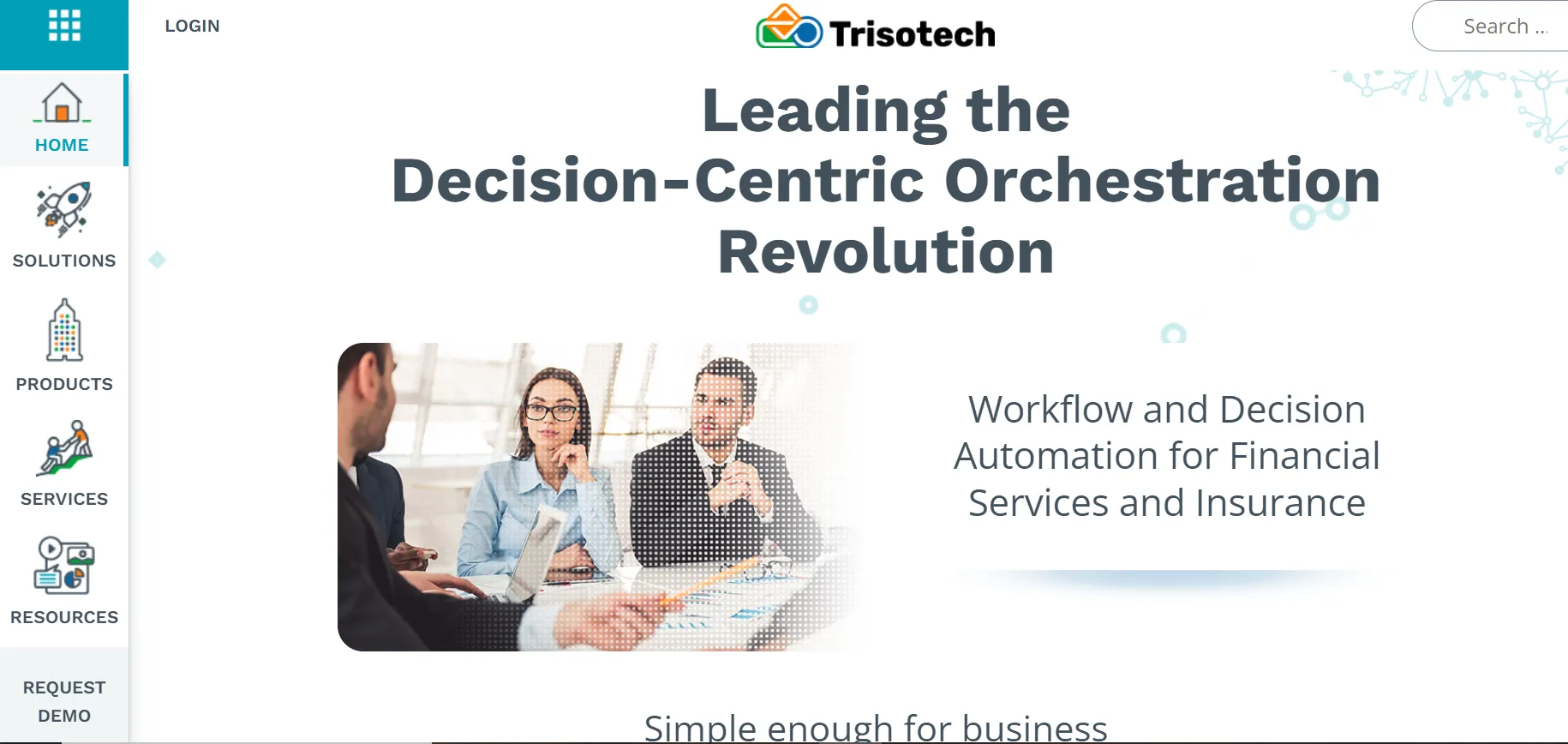
Trisotech is a powerful business process management (BPM) suite designed to help organizations streamline operations and foster digital transformation. Its focus on process modeling, automation, and decision management makes it a top choice for companies seeking robust tools for continuous improvement and operational excellence.
Reasons to Buy
- Comprehensive Process Modeling: Trisotech’s Digital Enterprise Suite includes industry-standard tools like BPMN, CMMN, and DMN, allowing organizations to model processes, decisions, and workflows in a clear, visual format.
- Embedded AI & Automation: With integrated AI tools and support for decision automation, Trisotech provides businesses with the ability to streamline processes, optimize decision-making, and improve resource allocation.
- End-to-End Process Visibility: The suite offers tools for process discovery, mapping, and real-time monitoring, ensuring organizations maintain transparency across workflows and improve agility.
- Interoperability & Integration: Trisotech seamlessly integrates with popular third-party tools and platforms, offering flexibility for businesses that rely on multiple systems. It also supports integration with Red Hat and other BPM engines.
- Support for Digital Transformation: The platform is tailored for businesses aiming to digitize and modernize operations, helping companies innovate and adapt to evolving business environments.
What Sets This Tool Apart
- Decision Management and DMN Modeling: One of Trisotech’s standout features is its DMN (Decision Model and Notation) Modeler, which allows businesses to model and automate decision-making processes. This is particularly useful in industries like finance and healthcare.
- Process Simulation & Analysis: Trisotech enables users to simulate different scenarios and analyze potential outcomes, which is critical for businesses focused on continuous process improvement and optimization.
- Support for Multiple Industries: Trisotech’s tools are versatile and cater to a wide range of sectors, from healthcare to finance, making it an adaptable solution for businesses of various sizes.
What It Lacks
- Limited for Small Businesses: While Trisotech excels for enterprises, its advanced features may be more than smaller businesses require. The platform is more suitable for companies that need extensive BPM capabilities.
- Complexity for Non-Technical Users: Although Trisotech provides no-code and low-code options, some of its more advanced features, such as DMN and process orchestration, might have a steep learning curve for non-technical users.
- Pricing Transparency: Trisotech offers custom pricing based on organizational needs, which can be less transparent compared to competitors. Businesses may need to request detailed quotes to understand the full cost..
Pipedrive for Business Process Improvement
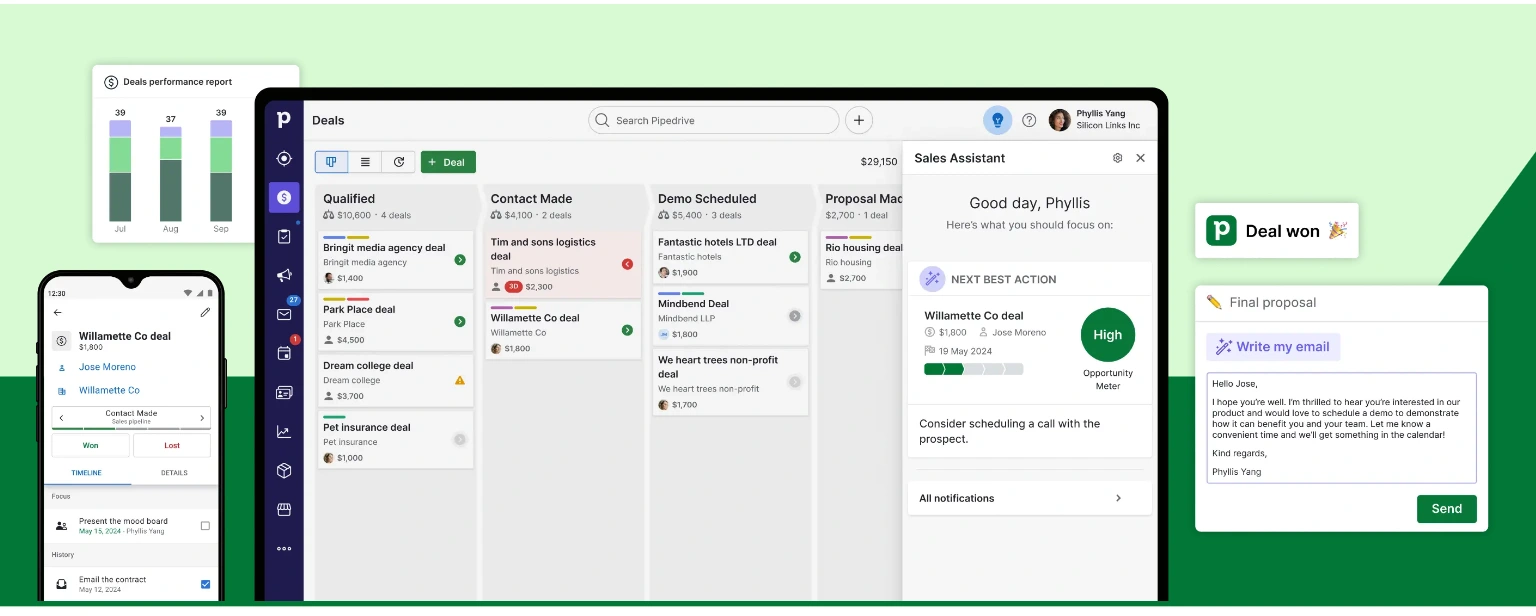
Pipedrive is a CRM platform primarily designed to optimize sales processes and drive efficiency through automation and data management. It’s an excellent tool for small to medium-sized businesses (SMBs) looking to streamline their sales pipelines, manage customer relationships, and boost productivity through automation.
Reasons to Buy
- User-Friendly Interface: Pipedrive offers a simple, drag-and-drop interface that is intuitive for users across skill levels, making it easy to track deals and manage pipelines.
- Sales-Focused Automation: Pipedrive allows for the automation of repetitive tasks such as follow-up emails, deal movement, and task reminders, saving time and reducing human error.
- Customizable Reports: The CRM includes highly customizable sales reports, providing real-time insights into deal progress, lead conversions, and sales forecasts.
- Smart Contact Data & Lead Management: Pipedrive’s Smart Contact Data feature pulls lead information from public sources like LinkedIn with a single click, allowing users to gather useful contact details quickly.
- Extensive Integrations: With over 400 integrations, Pipedrive connects seamlessly with other tools like Slack, Zoom, and HubSpot, making it easy to fit into your existing tech stack.
What Sets This Tool Apart
- Visual Pipeline Management: Pipedrive’s visually organized Kanban-style pipeline management makes it easy for sales teams to track deal stages and take immediate action on deals at risk of stalling.
- AI Sales Assistant: Pipedrive’s AI-powered assistant analyzes deal data and offers recommendations, helping teams optimize their workflows and close more deals.
- LeadBooster Add-On: Pipedrive offers an optional add-on that includes a chatbot for lead generation, web forms, and access to a large lead database. This tool helps sales teams capture leads directly from websites and adds them to the CRM.
What It Lacks
- Limited Free Plan: Pipedrive does not offer a free version, and even the most basic paid plan lacks some advanced features such as email automation and Smart Docs (for digital document management).
- Sales-Centric: While Pipedrive excels in sales automation, it may not be the best fit for businesses looking for a broader CRM solution that covers other departments such as customer support or marketing.
- Add-On Costs: Features like the LeadBooster chatbot, Smart Docs, and project management tools are available as add-ons, which can quickly increase the cost if several are needed.
Miro for Business Process Improvement
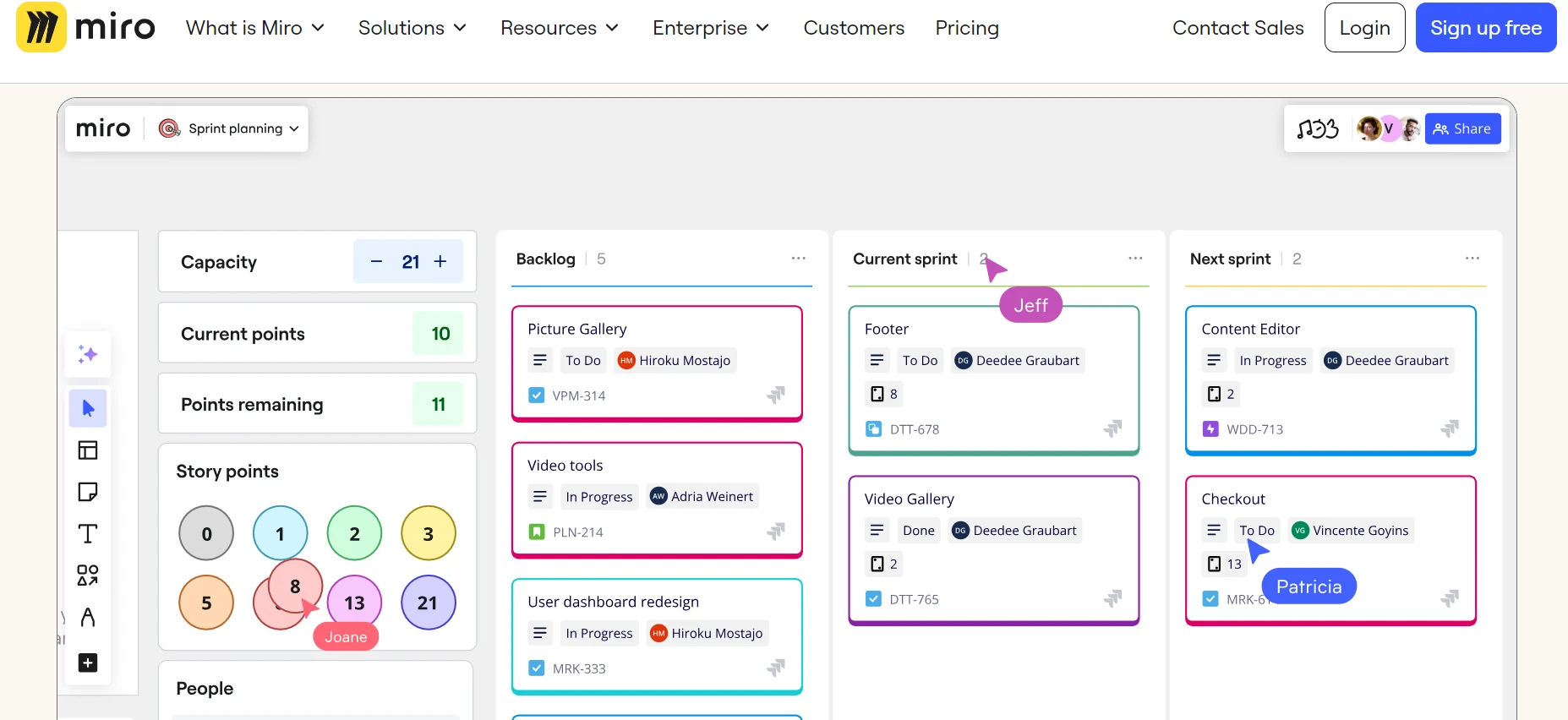
Miro is an innovative, cloud-based collaboration tool that excels in visual communication, brainstorming, and project management. Its versatility, extensive template library, and real-time collaboration capabilities make it a top choice for teams engaged in creative, strategic, or process improvement work.
Reasons to Buy
- Infinite Canvas: Miro provides an endless digital canvas, allowing teams to map processes, brainstorm ideas, and visualize strategies without space limitations, making it ideal for complex business process improvement tasks.
- Real-Time Collaboration: Miro facilitates live, interactive collaboration, enabling team members to contribute to discussions, brainstorm, and edit work simultaneously, regardless of location.
- Extensive Template Library: Miro offers a vast array of customizable templates for process mapping, project planning, and brainstorming, reducing the setup time and helping teams start their work with predefined structures.
- Integrations: Miro integrates with popular business tools like Slack, Jira, and Microsoft Teams, creating a seamless workflow and allowing teams to manage processes in one place.
- Presentation Mode: Miro’s boards can be transformed into presentations, allowing users to walk through their work like a slide deck, eliminating the need for separate presentation software.
What Sets This Tool Apart
- Versatility Across Industries: Miro is particularly suited for creative teams and industries that rely heavily on visual collaboration. It supports use cases ranging from marketing strategy development to system architecture design.
- Miro Assist (AI Integration): Miro’s AI-powered features, such as Miro Assist, help teams brainstorm and organize content more efficiently by providing generative AI-powered insights.
- Customizable Workspaces: The ability to tailor the workspace to individual or team needs makes Miro highly flexible, supporting a variety of business process improvements, from lean management to agile development.
What It Lacks
- Performance Issues with Large Projects: As boards grow more complex, performance can degrade, leading to slower loading times and less fluid collaboration experiences.
- Steep Learning Curve for New Users: While Miro’s interface is intuitive, mastering its extensive set of features may take time, especially for users new to visual collaboration tools.
- Limited Offline Functionality: Miro relies heavily on internet connectivity, and its offline capabilities are minimal, which can be a limitation for users who need to work in environments without consistent online access.

